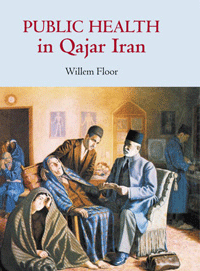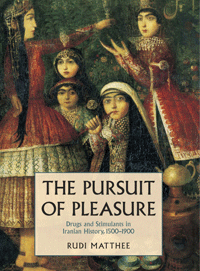 Nomadic
abstracts Nomadic
abstracts
Modern nomad's journey
through different postings, stations, contracts,
or through the myriad refugee camps, prisons and relay posts
Reza Fiyouzat
July 14, 2005
iranian.com
Although most of humanity is localized, a better view into the
general state of humanity is provided through a closer look at
the conditions of the 'global nomads': migrants, refugees, asylum
seekers, undocumented immigrants, international seasonal/migrant
workers, gypsies, sex slaves, imperial and mercenary soldiers,
to give an incomplete list.
Luca Dall'Oglio, Permanent Observer to the United Nations, in
his statement to the United Nations General Assembly, 3rd Committee:
Questions Relating to Refugees, Returnees and Displaced Persons
and the Humanitarian Question (New York, November 3, 2003), stated, “In
today's world, international migration has achieved a degree of
prominence on the international agenda never felt before. It is
not only because there are 175 million international migrants,
but because all indicators point to migration as a continuing and
growing structural component of contemporary socio-economic development,
whose benefit can reach out to origin and destination countries,” (emphasis
added).
This figure of 175 million humans represents roughly 3% of humanity.
The figure includes highly skilled workers, estimated at around
1 million, as well as the bottom of the rungs filled with 27 million
manual workers of all skills. The figure of 175 million also includes
those trafficked across international borders, an estimated 2 million
annually.
What this figure does not include is the number of illegal immigrants,
estimated at between 2 to 4 million people annually.
One noteworthy point is that, of these migrants, in terms of
absolute numbers (not percentages of total local populations) the
biggest concentration (56.1 million) is located in Europe, the
second largest (49.7 million) in Asia, and only the third largest
(40.8 million) in North America.
To the above figure, we must add another very substantial one.
Although the official figures given for the number of worldwide
refugees usually reside closer to about 20 million, in its annual
report for the year 1997, titled, The State of the World’s
Refugees, 1997: A Humanitarian Agenda, the United Nations High
Commissioner for Refugees stated that, “In total, some 50
million people around the world might legitimately be described
as victims of forced displacement.” This number can safely
be taken as a standard, even if, after the passage of eight years
and three major military aggressions, the numbers could easily
be higher. These include the international refugees, as well as
people ‘displaced internally’, meaning they are refugees
in their own country, much like the three hundred thousand Iraqi
residents of Fallujah living as refugees on the outskirts of their
formerly existent city.
To this mass of humanity being thrust about the globe annually
in search for jobs, safety, food, shelter, or whatever bit of warmth
and comfort humanity can still afford or cares to offer, we must
add the massive historical human displacements due to modernity’s
centuries-old quests in civil wars, wars between nations, and colonization.
And this last one is by no means a bad nightmare from modernity’s
shameful past, one from which we have successfully been withdrawn.
To borrow from another, very related context, ‘Never Again,
Never Again!’ loses credit, when repeated by repeat offenders.
Far from it; this colonial ‘tendency’ is still alive
and kicking people’s doors down just as shamelessly as was
done in the good old times of the Romans and the Pharaohs. Witness
the invasion and occupation of Afghanistan and Iraq, and, observe
likewise the longest running late-modern colonial project, the
continued colonization of Palestinian land, now into its 38th year
at least (if you want to deny the mass exodus of 1948), and the
brutal suffocation of the Palestinians at the hands of a colonizing
and openly racist state.
To all of this, a final footnote has to be added: the covert
interventions in the life of other nations, something which the
sedentary citizens of the First World nations are on average far
more comfortable with than are the citizens of the Third World.
These interventions produce nomads of various stripes, from complete
innocents all the way to the spooks.
So, it takes little theoretical insight to say that the modern
nomad is moved around the globe by forces far more complex than
those moving the traditional nomads. These forces are man-made,
even in some instances where natural phenomena such as floods or
mudslides have caused the displacement of large communities in
places where, say, over-logging has been consistently practiced.
The modern nomad is moved about, more concretely, by the forces
unleashed by the world capitalist system, and not by some invisible
hands.
Take the ‘rate of profit’. It is a well-established
economic fact that over time, the rate of profit of any given industry/firm
tends to diminish. Therefore the upkeep of the ‘rate of profit’,
and its defense and protection by any means necessary requires
that capital must take flight at the first sign of diminishing
returns. Hence, capital tends to create, to the extent that is
possible, conditions under which it can take flight increasingly
more easily, and will most likely confront with all its might any
effort to limit its sphere of maneuverability. This ease of maneuverability
creates millions upon millions of unemployed workers, and hence
potential nomads worldwide.
Which leads to the next, less ‘innocent’ forces,
such as the political machinations of the markets, which are operative
just as much in garbage collection contracts signed in New York
City, as in the bribed contracts made in Tehran, or the pre-signed
contracts for Halliburton to re-build Iraq, as if Iraqis have not
done that for themselves for thousands of years no thanks to any
foreigners.
 And finally, in the service of establishing monopoly over markets,
the ever-needed wars: of colonization to plunder resources; of
national-state expansions, nationalistic/racial purges, annexations;
and the second of the double-charge imposed on colonies in the
form of the suffering as a result of inter-imperialist wars over
colonial acquisitions; and not to forget all the suffering caused
by the civil wars that accompany the liberation from colonization. And finally, in the service of establishing monopoly over markets,
the ever-needed wars: of colonization to plunder resources; of
national-state expansions, nationalistic/racial purges, annexations;
and the second of the double-charge imposed on colonies in the
form of the suffering as a result of inter-imperialist wars over
colonial acquisitions; and not to forget all the suffering caused
by the civil wars that accompany the liberation from colonization.
* * *
The Qashgai tribes of Iran are a traditional nomadic people.
As herders, they move from one territory to another, depending
on the seasons as well as the availability of grazing land, mostly
in the southern regions in and around the province of Fars. In
the developmental models that take western industrialized states
as their reference, the Qashqai people are a traditionalist people,
meaning pre-modern; modernity, meaning capitalism, and its onset
in clear view, say, by 1500s.
Were we to compare what I would term the ‘modern nomads’ to
these traditional nomads, the latter could easily be considered
the happier of the two. Happier, obviously since, in spite of the
constant physical movement, they have peace and security of mind:
peace of mind from the assurance that tomorrow will be just as
filled with fruitful effort and labor as is today. And happy also
in the sense that they have ‘tempered their desires’:
the restless desires to go beyond their life-experience thus placed
on a leash, it becomes crystal clear to anybody who ever conversed
with them in person that the smiles on their rose-cheeked faces
are not forced nor faked, but anchored in a real depth; their glowing
faces not an exchange for a material thing, the way a McDonald’s
counter person is trained to fake it.
This is not to say that nomadic tribes are fundamentally free
from contradictions or incapable of violence; we need only remember
the Mongolian invasions, or tribal wars throughout the ages. But,
it is to say that violence is far less structurally necessary among
the traditional nomads, especially as they are situated in, and
surrounded by, modernity today.
A Western middle class reader may think, “Surely the traditional
nomads must be miserable and must yearn for something more. They
must have yearnings!” And most assuredly, much like the rest
of humanity, they do in fact have certain yearnings. And some may
yearn to seek a non-tribal life.
But, who says the traditional nomad’s yearnings are limited
to wanting to ‘break out’ from the ‘shackles’ and ‘drudgery’ of
being a herdsman or woman? Their striving may just as well be for
better ways of herding, for more abundant grazing land, or for
better tools to improve the conditions of their chosen way of life.
Or for less arbitrary districting of the lands they traverse and
for less harassment by the national armies and paid thugs grabbing
their grazing lands on behalf of some corporation or government
agency. Such nomadic peoples have had some of the longest running
records of successful, sustained, and sustainable existence for thousands of years. Clearly they have something going for them.
In this light, we can safely say that, on average, the traditional
nomad is the happier lot not only compared to their obviously-more-maligned
modern cousins. But, we can just as safely side with a Qashqai
nomad in the outskirts of Shiraz, who, when faced with his sedentary
cousin -- the super-stressed tradesman from Bazaar-e Vakil (Shiraz’s
biggest and oldest market, adjacent to its biggest mosque, Shah-Cheragh) -- can
boastfully declare his nomadic ways far superior, far healthier,
far freer, and inducing far fewer ulcers. The sedentary cousin
cannot but nod in agreement and reflect sadly on the state of the
social relations of domination that arbitrarily contain and suffocate
him daily, feeding all his purely economic as well as down to private
acts through the administrative machinery of the modern state as
it has (or not) developed in Iran.
So, between these two, i.e. between the traditional nomads and
the modern country or town/city dwellers, whose identity is more
secure, more self-assured, and less riddled with contradictions?
Or, is this a false question?
The truly liberating questions cannot pose a false choice between
capitalism in its different forms, and adapting some pre-capitalist
method in organizing modern life with all its complexities. Such
was the dilemma for Pol Pot. The answer to our modern riddle cannot
be that simplistic.
 The modern nomad, by contrast, has a better objective position
to discern the arbitrary nature of the given rules, of seeing through
to the heart of the instability of the system, the very instability
that his modern sedentary cousins may take for ‘the creative
powers of capital’ and therefore mistake for the zenith of
stability incarnate. The modern nomad, by contrast, has a better objective position
to discern the arbitrary nature of the given rules, of seeing through
to the heart of the instability of the system, the very instability
that his modern sedentary cousins may take for ‘the creative
powers of capital’ and therefore mistake for the zenith of
stability incarnate.
An Iraqi man in his early forties, who, having sat in some Iranian
prison as a prisoner of war, some fifteen years after the end of
Iran-Iraq war, and who finally gets to go back home for a short
peaceful hiatus, only to see his country invaded by the Americans
and the British (who had previously supported Saddam, who packed
him off to kill Iranians), can tell you a thing or two about arbitrariness
of modern life.
At the age of eighteen, or perhaps earlier, at
the peak of his health and creativity, brimming with potentials,
filled with dreams, he was drafted into army by some decree by
a dictator, and was summarily sent to a war, over the ensuing of
which he had zero input, and from which he had less to gain. While
in this war, he did his best to survive, only to be taken a prisoner
and have fifteen to sixteen years of his life evaporated into some
absurdity. In most likelihood, he left that Iranian prison so that
be could be grabbed by some American soldiers and send to Abu Ghuraib,
or any of the thousands of ‘detention centers’ sprouting
around Iraq, tortured and humiliated for years or, worse, kept
indefinitely.
To this man and millions like him of both genders, of all age
groups, and of all races, with their lives’ prospects dwindled
to a singular continuous road through one random destitution after
another, never given a chance, and every time a single ray of hope
fell on them it disappeared just as fast, can anybody say with
a straight face that modern life is anything but a random, senseless,
irrational series of events?
Most modern nomads lack any of the illusory senses of sustained
happiness, as they continue on their journeys through different
postings, stations, different contracts, positions, or conversely
through the myriad refugee camps, prisons, relay posts, or as they
are being smuggled across international borders, or as they travel
through dangerous terrain on foot with no support. The modern nomads
form a global fluid class that allows the global wage structure
a lower floor; except, of course, for that highly paid professional
section in its higher echelons, proving ironically that all social
formations carry their own class contradictions.
 As this modern nomad is forced about the globe, he or she sees
clearly that borders are highly selective (hence, random, arbitrary),
and almost non-existent for capital and the moneyed. The modern
nomads see just as clearly that the First World moneyed peoples
who come to visit with armies, rudely help themselves to others’ lands
and resources with no shame at all, while preaching the sanctity
of sovereignty for their own lands. The modern nomad is the first
to point out the similarities between methods used by his own local
dictator in rising to power and those used by George W. Bush in
his rise to power in 2000. As this modern nomad is forced about the globe, he or she sees
clearly that borders are highly selective (hence, random, arbitrary),
and almost non-existent for capital and the moneyed. The modern
nomads see just as clearly that the First World moneyed peoples
who come to visit with armies, rudely help themselves to others’ lands
and resources with no shame at all, while preaching the sanctity
of sovereignty for their own lands. The modern nomad is the first
to point out the similarities between methods used by his own local
dictator in rising to power and those used by George W. Bush in
his rise to power in 2000.
* * *
It is a fact that most of humanity is still sedentary, and attached
to (or, locked into) localities. This part of humanity too is not
free of the problems and contradictions of modern society. Each
sedentary community faces its local problems: finding jobs and
avoiding the homeless status, finding decent housing, finding fulfilling jobs if possible, educating their kids, finding proper health care,
securing a half-decent pension or trying to find out who stole
it, facing crumbling infrastructure, facing violence in their communities
or domiciles, dealing with congestion and the nowadays guaranteed
air/water/soil/food pollution, facing unreliable, irresponsible
and unresponsive officials, grappling with potential or actual
poverty even while employed, dealing with hunger, unemployment,
or conversely with the effects of over-consumption, addiction and
waste, and a whole series of malignancies that we are told are
necessary, even therapeutic: necessary, because part and parcel
of the road that paves the path to, and sustains, our beloved Modernity
as set in stone in the form of world capitalism.
Whereas the majority of humanity has to struggle with local,
particular, or specific conflicts and contradictions (even if these
are due to universal, structural causes), the modern nomadic minority
struggles with and is trying to come to grips with the more universal
symptoms of modernity and its contradictions. The modern nomad
is the clear indication of the price that this world system is
not only willing to pay, but is happily busy organizing for its
own furtherance, in ensuring its everlasting survival. So, at the
current stage in the development of our species, is not our modern
nomadic minority a truer window to our identity and to our collective
state than is our sedentary majority?
 We are quite easily the saddest and the most disease-riddled
species on this planet. Sure, we do have happiness. And, yes, any
real effort in striving to go beyond our present state will come
with pain. But both our pleasures and our miseries are crammed
with class conflict: the ruling classes monopolize most of the
happiness, while the majority of the species waddles through the
infinite supply of misery. So, the striving to go beyond would
naturally find its proponents mostly among the dispossessed majority. We are quite easily the saddest and the most disease-riddled
species on this planet. Sure, we do have happiness. And, yes, any
real effort in striving to go beyond our present state will come
with pain. But both our pleasures and our miseries are crammed
with class conflict: the ruling classes monopolize most of the
happiness, while the majority of the species waddles through the
infinite supply of misery. So, the striving to go beyond would
naturally find its proponents mostly among the dispossessed majority.
We do have a choice. And the choice is still the same as it was
when Marx put it bluntly as the one between socialism and barbarism.
It is very clear which is the choice of the ruling classes. But
the choice of the working classes is not very clear yet.
About
Reza Fiyouzat is an applied
linguist/university instructor, and a freelance writer. Visit his
blog, Revolutionary
Flowerpot Society.
|